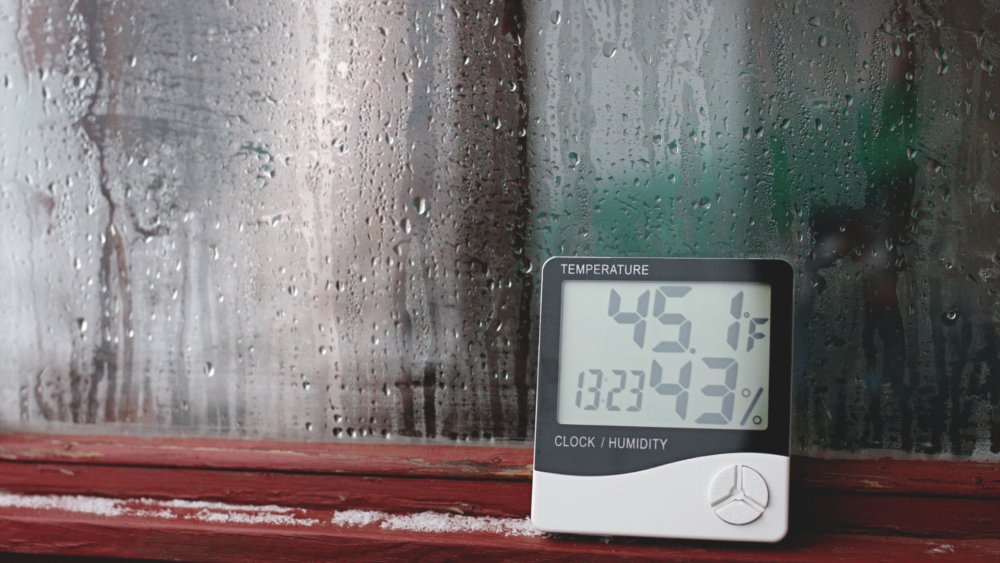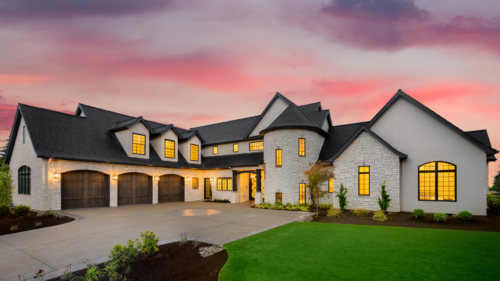Living in places that are always damp and muggy brings its own set of challenges for those trying to make a house feel like home. Dealing with moisture issues requires not just any siding solution but the right one. With humidity being a silent enemy that slowly compromises the integrity of our homes, it becomes crucial to choose materials wisely. The average ROI of email marketing investments might stand at 3800%, but when it comes to protecting your home from moisture damage, there’s no direct statistic that can quantify peace of mind or safety.
Lucky for us, the march of progress in technology and materials science means we’ve got plenty of choices on our hands. From vinyl sidings with built-in rain channels to engineered wood products designed specifically for high-moisture environments, today’s market offers an array of choices tailored for battling these very conditions.
Understanding the Impact of Humidity on Siding
Humidity can be a silent killer when it comes to your home’s siding. It’s not always as obvious as a leaky pipe or a broken window, but over time, high humidity levels can cause some serious damage.
So, what exactly does humidity do to your siding? Let’s take a closer look.
How Does Humidity Affect Different Siding Materials?
Different siding materials react to humidity in different ways. Take wood siding, for example. When exposed to high humidity, wood can absorb moisture, causing it to swell, warp, and even rot over time.
Vinyl siding, on the other hand, is a bit more resilient. It doesn’t absorb moisture like wood does, but it can still be affected by humidity. High humidity levels can cause vinyl siding to expand and contract, leading to gaps and cracks that allow moisture to seep in.
And let’s not forget about the dreaded moisture problems that can come with any type of siding. When humidity levels are high, moisture can get trapped behind the siding, leading to mold, mildew, and even structural damage.
Identifying Signs of Moisture Damage on Your Siding
So, how can you tell if humidity is taking a toll on your siding? Here are a few signs to look out for:
- Peeling or blistering paint
- Warping or buckling siding panels
- Soft or spongy spots on wood siding
- Mold or mildew growth
- Gaps or cracks between siding panels
So, if any of these signs pop up, it’s your cue to jump into action. Ignoring moisture damage can lead to costly repairs down the line, so it’s best to nip it in the bud as soon as possible.
Selecting the Ideal Siding for Wet and Humid Climates
If you live in a wet or humid climate, choosing the right siding material is crucial. You want something that can stand up to the elements without succumbing to moisture damage.
Comparing Costs and Reviews of Various Siding Materials
When it comes to siding materials, you’ve got options. From traditional wood to modern vinyl, there’s no shortage of choices. But which one is the best for humid climates?
Let’s start with cost. Vinyl siding is often the most affordable option, with prices ranging from $2 to $7 per square foot. Wood siding, on the other hand, can cost anywhere from $5 to $10 per square foot.
But cost isn’t everything. Also, it’s smart to think about how tough and water-resistant your choice is. According to LP SmartSide, their engineered wood siding is specifically designed to stand up to moisture thanks to their proprietary SmartGuard process.
Why James Hardie Siding is a Preferred Choice in High Humidity Areas
When it comes to siding for humid climates, James Hardie is a name that comes up time and time again. And for good reason.
James Hardie siding is made from a durable fiber cement material that resists moisture, rot, and even pests. Plus, it’s tough enough to laugh in the face of fire and stand strong against howling winds, making it an absolute favorite for those living along the coast where hurricanes like to party.
But don’t just take our word for it. James Hardie has a long history of positive reviews from homeowners and contractors alike. In fact, they’ve been named the #1 brand of siding in America for over a decade.
Preventing Water Damage: Strategies for Protecting Your Home’s Exterior
Of course, even the best siding material won’t do much good if it’s not installed properly. That’s why it’s important to take steps to prevent water damage from the get-go.
How Proper Installation Prevents Moisture Penetration
Proper installation is key when it comes to preventing moisture penetration. This means making sure that siding panels are securely fastened, gaps are sealed, and flashing is installed around windows and doors.
Picking a contractor who knows their way around siding in places where the air’s always a bit sticky is also super crucial. When you’re on the hunt, aim for a pro who doesn’t skimp on material quality and sticks to the playbook when it comes to installing everything just right.
The Role of Ventilation in Controlling Moisture Levels
Good airflow is your best friend when it comes to keeping moisture from getting cozy behind your siding. If you don’t let your house breathe properly, you’re inviting a whole bunch of unwanted guests – mold, mildew and even the possibility of some serious damage to your home’s bones.
According to Foundry Siding, creating an airflow cavity on the back side of your siding can help prevent moisture issues. This, along with proper flashing and weather-resistant barriers, can go a long way in keeping your home dry and healthy.
Dealing with Existing Moisture Issues: Effective Solutions
If you’re already dealing with moisture issues, don’t despair. There are steps you can take to mitigate the damage and prevent future problems.
Where is the Moisture Coming From? Identifying Sources of Water Intrusion
The first step in dealing with moisture issues is identifying the source of the problem. Is it a leaky roof? Faulty gutters? Poor drainage around the foundation?
Take a close look at your home’s exterior and interior, paying special attention to areas prone to moisture buildup. Once you’ve identified the source of the problem, you can take steps to fix it.
Using Dehumidifiers and Natural Methods to Control Humidity Levels
Besides tackling the root cause, you’ve got a handful of ways to keep humidity levels in your home under control. One effective solution is using a dehumidifier.
Dehumidifiers work by removing excess moisture from the air, helping to prevent mold and mildew growth. You’ll find them in all sorts of sizes, from handy portable models that you can take anywhere to comprehensive systems that keep your entire house comfortable.
You can also use natural methods to control humidity levels, such as opening windows on dry days to allow for air circulation, using exhaust fans in bathrooms and kitchens, and keeping houseplants that absorb moisture from the air.
By taking a proactive approach to moisture control, you can help protect your home’s siding and prevent costly damage down the line.
FAQs in Relation to “Dealing With Moisture Issues: Siding Solutions for Wet and Humid Climates”
What is the best siding for high humidity areas?
James Hardie Siding takes the crown in humid areas for its moisture resistance and durability.
What methods will help protect siding from moisture damage?
Proper installation, regular maintenance, and ensuring good ventilation are key to keeping your siding safe from moisture.
What is the best siding for tropical climates?
Fiber cement siding outperforms others in tropical climates by resisting rot, pests, and warping.
What is the best siding for Florida weather?
Vinyl siding shines in Florida’s climate due to its resilience against sun exposure and humidity.
Conclusion
At day’s end, navigating through the maze of siding solutions for wet and humid climates isn’t just about making aesthetic decisions; it’s about securing your sanctuary against the elements—rain or shine. AI may have been around since the early ’60s silently enhancing our lives behind scenes—from smart assistants making daily tasks easier to systems keeping fraud at bay—but finding practical answers for dealing with moisture issues? That requires a bit more human touch combined with innovative building technologies.
This journey through selecting ideal sidings has shown us two things clearly: One, that although we live in an age where almost everything feels automated or managed by some form of artificial intelligence; sometimes what really matters is getting down into nitty-gritty details ourselves—be it choosing weather-resistant sidings or understanding how proper installation makes all difference.




